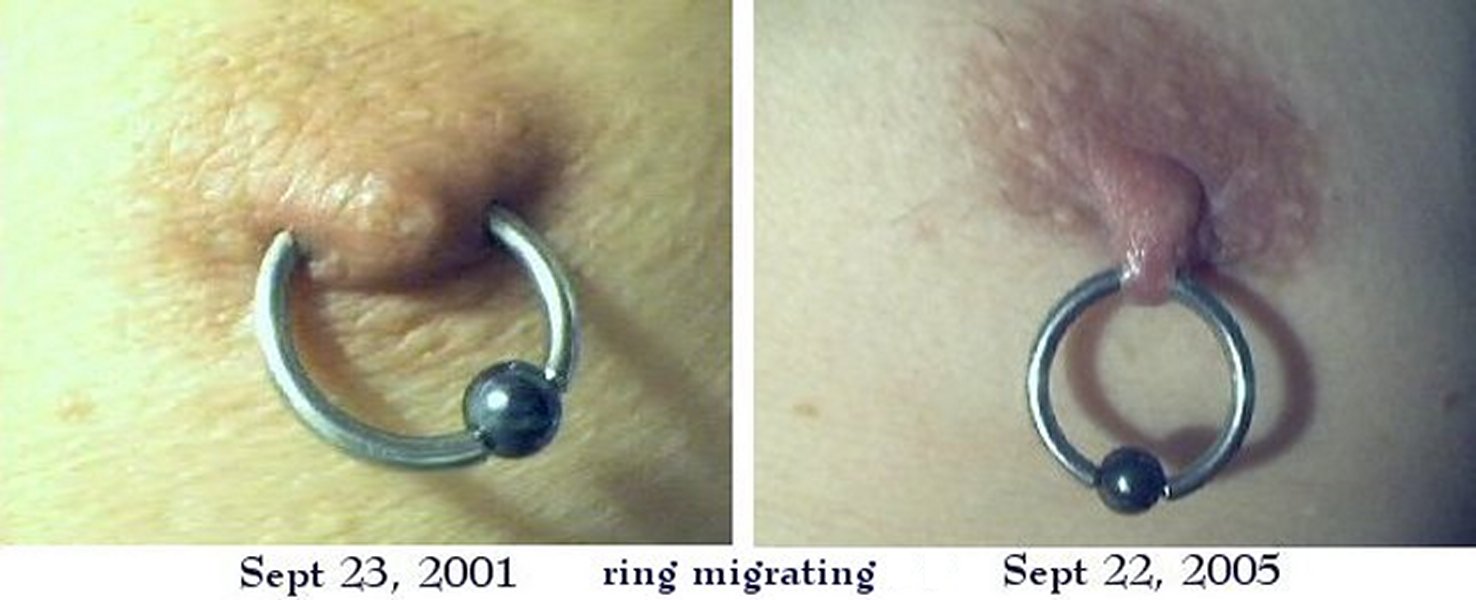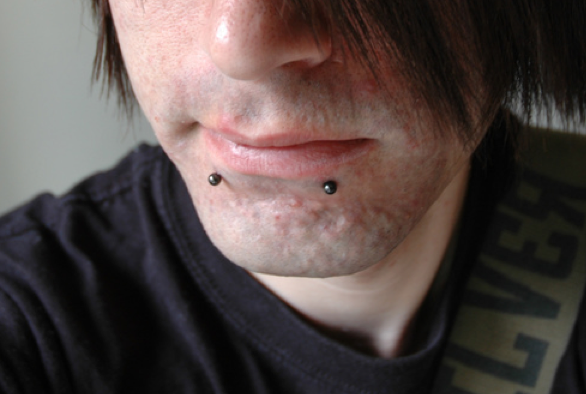|
Tongue Frenulum Piercing
A tongue frenulum piercing, tongue web piercing, or lingual frenulum piercing is a body piercing through the frenulum underneath the tongue ( frenulum linguae). These piercings do have a tendency to migrate over time. Jewelry Both ring and curved barbell style jewelry can be worn in these piercings. See also * Lip piercing A lip piercing is a type of body piercing that penetrates the lips or the area surrounding the lips, which can be pierced in a variety of ways. Procedure and healing Approximate healing time for most lip piercings is between 1 and 3 months ... * Tongue piercing References External links Body Piercing Blog On Tongue Web Piercing {{Body piercing Body piercing Facial piercings Tongue ... [...More Info...] [...Related Items...] OR: [Wikipedia] [Google] [Baidu] |
Frenulum Linguae
The frenulum (or frenum) of the tongue, tongue web, lingual frenulum, frenulum linguae, or fraenulum is a small fold of mucous membrane extending from the floor of the mouth to the midline of the underside of the human tongue. Development The tongue starts to develop at about four weeks. The tongue originates from the first, second, and third pharyngeal arches which induces the migration of muscles from the occipital myotomes. A U-shaped sulcus develops in front of and on both sides of the oral part of the tongue. This allows the tongue to be free and highly mobile, except at the region of the lingual frenulum, where it remains attached. Disturbances during this stage cause tongue tie or ankyloglossia. During the sixth week of gestation, the medial nasal processes approach each other to form a single globular process that in time gives rise to the nasal tip, columella, prolabium, frenulum of the upper lip, and the primary palate. As the tongue continues to develop, frenulum cell ... [...More Info...] [...Related Items...] OR: [Wikipedia] [Google] [Baidu] |
Captive Bead Ring
A captive bead ring (CBR), ball closure ring (BCR), captive hoop, or captive ball ring is a common example of body piercing jewelry. The captive bead or ball fits into a small opening in the circle of the ring. The bead is slightly larger than this opening and has small indentations or depressions that correspond to the ring's end-points so that it may fit snugly against them, thus completing the circuit of the ring. Often, a hole is drilled through the bead to allow easier fitting. It uses the natural tension (mechanics), tensile or compression (physical), compressive strength of the metal the ring is made of, usually surgical stainless steel, niobium, or titanium, to hold the bead tightly in place. The bead or ball itself may additionally be made from coloured glass, acrylic glass, acrylic or ceramic, or a gemstone. This is a popular piece of body jewelry because it conveniently allows the wearer to remove the ring by simply removing the captive bead; the bead is held firmly in ... [...More Info...] [...Related Items...] OR: [Wikipedia] [Google] [Baidu] |
Barbell (piercing)
Barbell style piercing jewelry is composed of a straight bar with a bead on each end, one or both beads unscrewable for removal and/or changing of the beads. Often one of the beads is fixed, either via epoxy or welding, so that only one bead is used to install or remove the jewelry. Barbell screw thread, threads are usually right-handed. They are named because they resemble the barbells that are used in Powerlifting, weightlifting. Types of barbells Internally threaded barbells Named because the bar has smooth ends with receiving threads tapped into the end of the bar. In internally threaded jewelry, the bead has a receiving tube machined into it (this is referred to as "countersunk"), with a threaded post extending from the center, which mates with the threaded receiving tube on the bar. Being much less likely to cause damage and irritation, especially at the time of piercing, internally threaded jewelry is considered superior to externally threaded jewelry. It is u ... [...More Info...] [...Related Items...] OR: [Wikipedia] [Google] [Baidu] |
Frenulum
A frenulum or frenum (: frenula or frena, from the Latin ''frēnulum'', "little bridle", the diminutive of ''frēnum'') is a small fold of tissue that secures the motion of a mobile organ in the body. In human anatomy Frenula on the human body include several in the mouth, some in the digestive tract, and some connected to the external genitalia. *Brain: '' Frenulum of superior medullary velum'' or ''frenulum veli'' *Digestive tract: ''frenulum valvae ileocaecalis'' *Oral tissue: Frenula of the mouth include the frenulum of the tongue or ''frenulum linguae'' under the tongue, the '' frenulum labii superioris'' inside the upper lip, the '' frenulum labii inferioris'' inside the lower lip, and the buccal frena which connect the cheeks to the gum. These can easily be torn by violent blows to the face or mouth, thus a torn frenulum is sometimes a warning sign of physical abuse. *Penile tissue: The word ''frenulum'' on its own is often used for the penile frenulum or ''frenulu ... [...More Info...] [...Related Items...] OR: [Wikipedia] [Google] [Baidu] |
Tongue
The tongue is a Muscle, muscular organ (anatomy), organ in the mouth of a typical tetrapod. It manipulates food for chewing and swallowing as part of the digestive system, digestive process, and is the primary organ of taste. The tongue's upper surface (dorsum) is covered by taste buds housed in numerous lingual papillae. It is sensitive and kept moist by saliva and is richly supplied with nerves and blood vessels. The tongue also serves as a natural means of cleaning the teeth. A major function of the tongue is to enable speech in humans and animal communication, vocalization in other animals. The human tongue is divided into two parts, an oral cavity, oral part at the front and a pharynx, pharyngeal part at the back. The left and right sides are also separated along most of its length by a vertical section of connective tissue, fibrous tissue (the lingual septum) that results in a groove, the median sulcus, on the tongue's surface. There are two groups of glossal muscles. The f ... [...More Info...] [...Related Items...] OR: [Wikipedia] [Google] [Baidu] |
Frenulum Linguae
The frenulum (or frenum) of the tongue, tongue web, lingual frenulum, frenulum linguae, or fraenulum is a small fold of mucous membrane extending from the floor of the mouth to the midline of the underside of the human tongue. Development The tongue starts to develop at about four weeks. The tongue originates from the first, second, and third pharyngeal arches which induces the migration of muscles from the occipital myotomes. A U-shaped sulcus develops in front of and on both sides of the oral part of the tongue. This allows the tongue to be free and highly mobile, except at the region of the lingual frenulum, where it remains attached. Disturbances during this stage cause tongue tie or ankyloglossia. During the sixth week of gestation, the medial nasal processes approach each other to form a single globular process that in time gives rise to the nasal tip, columella, prolabium, frenulum of the upper lip, and the primary palate. As the tongue continues to develop, frenulum cell ... [...More Info...] [...Related Items...] OR: [Wikipedia] [Google] [Baidu] |
Piercing Migration
Piercing migration is a body piercing's movement from its initial location. Migration may be unnoticed, or painful with progression. It may be slight and brief, or continue until exiting the skin. Potential causes and effects of migration Migration varies widely. The most common case is heavy, small gauge earrings moving down until exiting the earlobe after most of a lifetime. It is dubbed the "cheese-cutter effect", because of its similarity to cutting cheese using a fine wire. Contemporary body and ear piercing jewelry mitigates the effect by increasing the weight to gauge ratio. However, migration remains possible, especially with heavy jewelry, even of large gauge. Another migration cause, though rare, is play or movement affecting the pierced or implanted area, either by causing a wound, or merely stretching the fistula in one direction, thus allowing tissue growth in the void behind. The latter can affect tongue piercings, for example, but neither normally induces exit fr ... [...More Info...] [...Related Items...] OR: [Wikipedia] [Google] [Baidu] |
Barbell (piercing)
Barbell style piercing jewelry is composed of a straight bar with a bead on each end, one or both beads unscrewable for removal and/or changing of the beads. Often one of the beads is fixed, either via epoxy or welding, so that only one bead is used to install or remove the jewelry. Barbell screw thread, threads are usually right-handed. They are named because they resemble the barbells that are used in Powerlifting, weightlifting. Types of barbells Internally threaded barbells Named because the bar has smooth ends with receiving threads tapped into the end of the bar. In internally threaded jewelry, the bead has a receiving tube machined into it (this is referred to as "countersunk"), with a threaded post extending from the center, which mates with the threaded receiving tube on the bar. Being much less likely to cause damage and irritation, especially at the time of piercing, internally threaded jewelry is considered superior to externally threaded jewelry. It is u ... [...More Info...] [...Related Items...] OR: [Wikipedia] [Google] [Baidu] |
Lip Piercing
A lip piercing is a type of body piercing that penetrates the lips or the area surrounding the lips, which can be pierced in a variety of ways. Procedure and healing Approximate healing time for most lip piercings is between 1 and 3 months; however, there is a possibility of serious infection if the piercing is not properly taken care of. After healing is complete, other jewelry may be used. After this time, some scar tissue may be present, but the fistula is normally fully developed and mostly healed. Aftercare consists of hot saline soaks two to three times daily. Soaking the wound for three to five minutes with a weak saline solution softens any blood and lymph discharge attached to the jewelry. Afterwards, taking a hot shower and using clean hands and a small amount of a mild soap such as castile soap removes excess matter from the site. Turning or otherwise moving jewelry on a fresh piercing is not advised, as it can irritate and lengthen swelling and healing time. Dil ... [...More Info...] [...Related Items...] OR: [Wikipedia] [Google] [Baidu] |
Tongue Piercing
A tongue piercing is a body piercing usually done directly through the center of the tongue. Since its decline in popularity around 2011, it has seen a recent upsurge making it now the second most popular piercing amongst young women aged 18–25 in 2019. It has become quite unpopular amongst men, although in the 1990s and early 2000s, it was more popular for men than women to get and associated with punk culture. Midline tongue piercings, or one hole through the center of the tongue is the most common way to have the tongue pierced. History and culture The term "tongue ring" is often used to refer to tongue piercing, but this is not accurate as rings are rarely worn in tongue piercings. There is a history of ritual tongue piercing in Aztec and Maya cultures. Priests would pierce their tongues and either draw blood from them or pass rough cords through to inflict pain. However, there is no evidence that the Aztecs practiced long-term or permanent tongue piercing, despite the ... [...More Info...] [...Related Items...] OR: [Wikipedia] [Google] [Baidu] |







